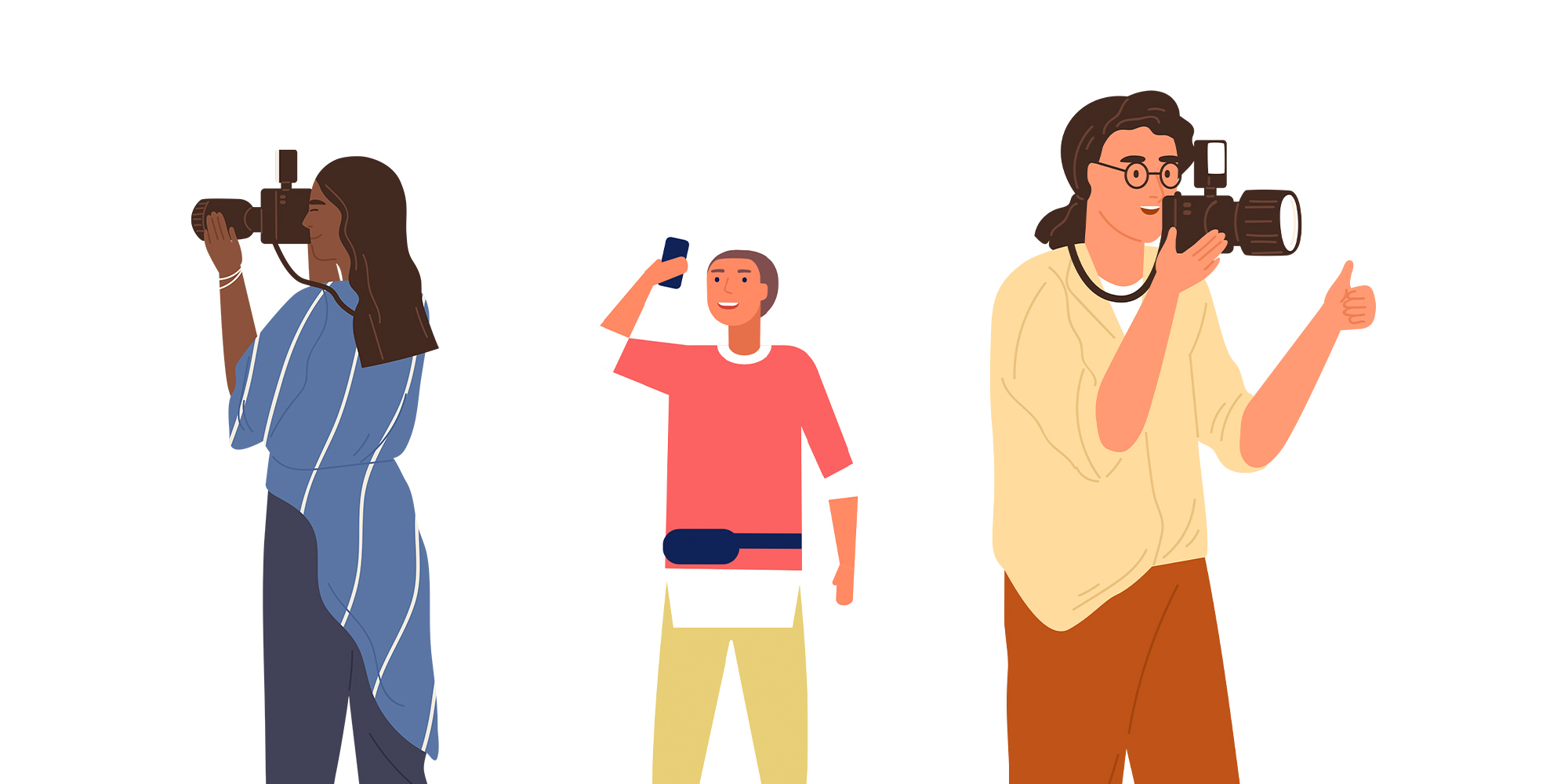For marketers, social media managers, photographers, and those who simply enjoy taking pictures, there is an ongoing debate regarding which camera is better- a smartphone or DSLR camera? After doing some research, we’ve determined that it’s not so much a question of which is better, it’s more of a question of when to use each type of camera.
The answer to that lies in the types of photos, or videos, being taken. In the world of photography, there are a few main categories of photos. The first is still photography, such as portraits, flat lays, landscapes, 3/4s, and similar styles. Then there are photos involving movement, like sporting events, images of crowds, and active landscapes (a waterfall for example). Within these categories, there are different types of lighting (day vs night), varying levels of zoom, and of course, video. Professional photographers know that this list is an abridged version of the many different styles of photography, but for the purpose of this discussion, these are the most important.
DSLR Basics
In the case of the DSLR, one of the biggest benefits is the ability of the camera to auto-focus. This takes the guesswork out of adjusting and readjusting the focus for every photo. But, while a DSLR can do some of the work for you, it is also extremely customizable, meaning you can alter the settings to make it work for various types of photography. DSLR cameras give the photographer absolute control of the camera’s shutter speed, aperture, and ISO settings, meaning more control over the shoot overall. Other benefits include:
- Ability to purchase different lenses and accessories to enhance photo capabilities
- Better sensors, meaning they can collect more light, leading to better image quality
- Longer battery life
While these are all great benefits, it’s worth noting that DSLR cameras are not without a few drawbacks. When comparing DSLR to smartphones, the obvious difference is their size. DSLR cameras are bulkier and may not be as useful for shooting on the go. Additionally, accessories can be expensive and may not be worth the cost if only used once in a blue moon. Finally, some have stated that since video is not the main intended purpose of DSLR the quality may not be as good, but there are many photographers and videographers who would dispute that claim, having utilized DSLR to produce excellent, high-quality, professional videos.
Smartphone Basics
Smartphone camera quality has come a long way since its humble origins. Today, image quality on smartphones rivals that of traditional DSLR cameras, with a much higher resolution than older models. Many smartphones even have multiple built-in lenses, allowing for a wider range of zoom capabilities. Video quality is also noticeably better, with a variety of frame options and up to 4K video resolution. Another important benefit of smartphone cameras is social media integration. The ability to shoot vertically for Snapchat and TikTok can be a game changer for social media managers who often need their photos to fit this aspect ratio. Additional benefits of using smartphones for photography include:
- Portability
- Increased storage capabilities (ex. iCloud on iPhone)
- Editing apps directly on the phone shortens the time between taking the photo, editing, and sharing
As with every piece of technology, smartphones have a few drawbacks of their own, the biggest being lighting issues. While newer smartphones are equipped with better sensors, they’re not advanced enough to rival DSLR cameras. Many smartphones now feature “Night Mode” to counteract this issue, but the photos are still lower quality than those a traditional camera would produce in the same situation. Another drawback is that since smartphones are much smaller and not ergonomically built the same way cameras are, they can be difficult to keep steady. For clearer still photos, you may need to purchase a phone mount or tripod to achieve the quality you’re looking for.
Recap
So, which camera should you use for each type of photo? Here are our conclusions, based on the strengths and weaknesses highlighted above.
Stills – This is highly dependent on the level of zoom needed and the lighting requirements. DSLR cameras would be ideal for photos that are very zoomed in, like microphotography, as well as photos with lower light. Meanwhile, smartphones may be more beneficial for zoomed-out photos like landscapes with bright natural lighting.
Action Shots – If your subject is continuously moving, DSLR is the better choice because of its advanced autofocus capabilities
Video – The jury is still out on this one. If you know your way around a DSLR camera and have the necessary accessories and photography experience, beautiful, high-quality videos are certainly possible. However, for those just starting out in their photography career, or for those who simply want to record videos of their cat, a smartphone camera can work just as well.
If there’s one thing we know for sure, it’s that the type of camera you should use is very much dependent on the type of photography, the situation, and the intended purpose of these photos. For novice photographers, smartphone quality is certainly good enough for everyday use. For professional photographers, it’s worth utilizing both cameras equally to capitalize on their strengths and produce the best photos possible. Here at Paperkite, we like to utilize all of the technology at our disposal: smartphones, DSLR, and video cameras. If you’re searching for high-quality photos and videos to step up your marketing, website, or social media presence, Let’s Talk! We have vast experience in various types of photography and would love to discuss how we can elevate your business.



